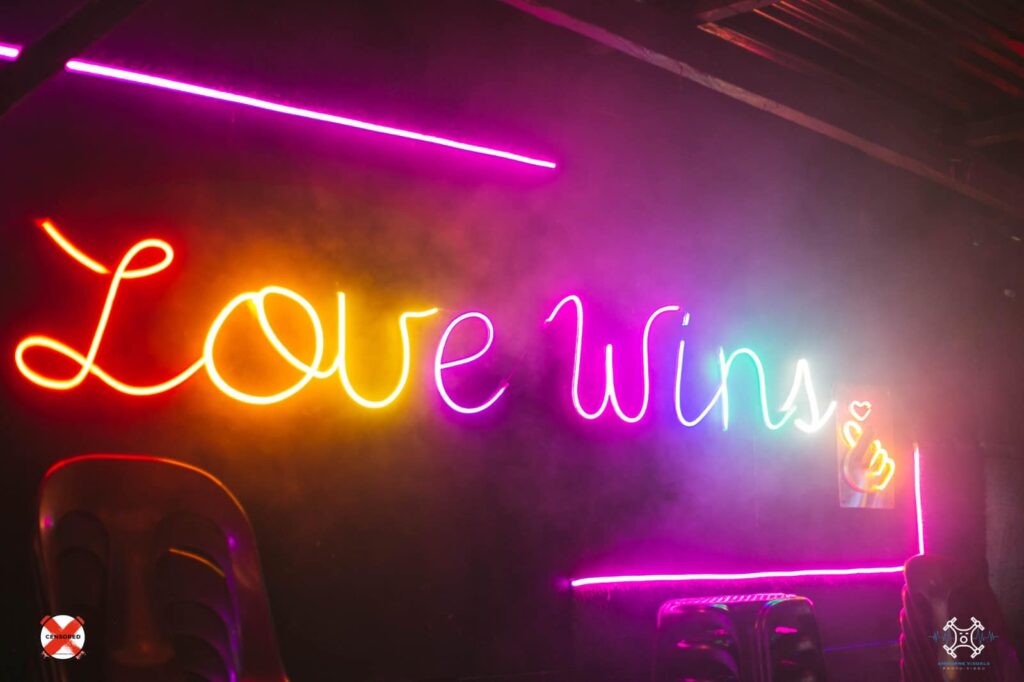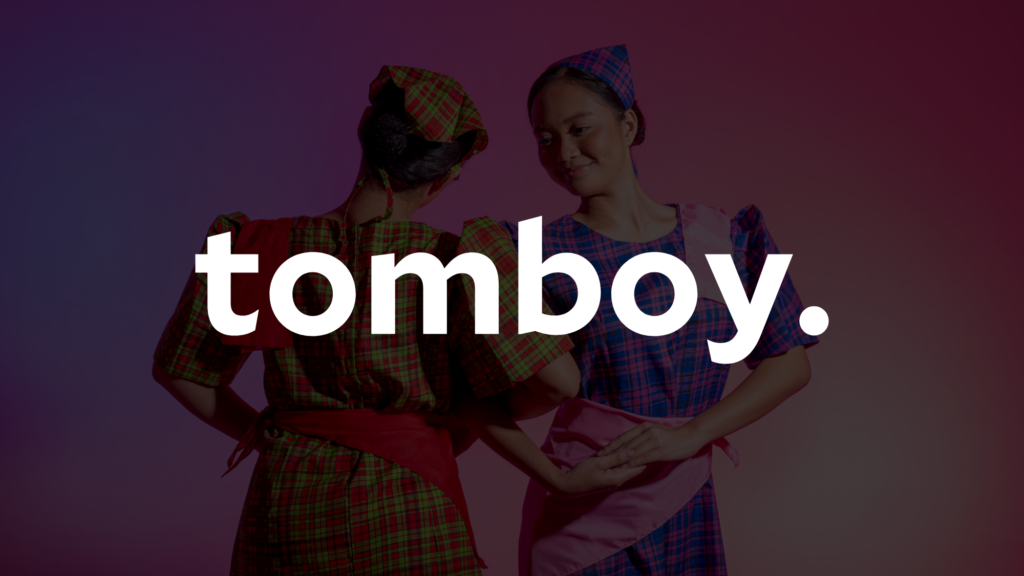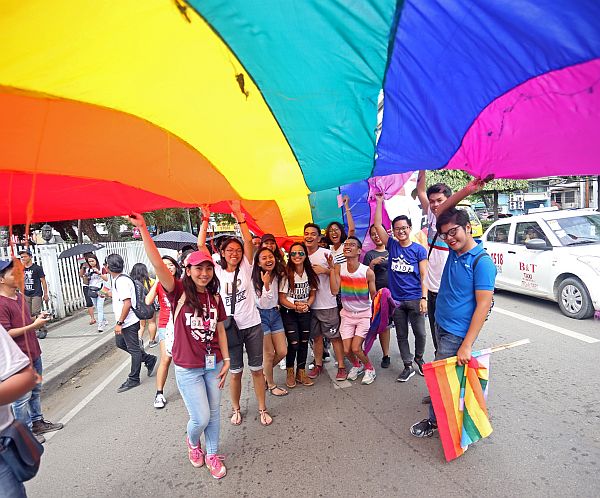CEBU CITY, Philippines — “Bayot! Yads! Tomboy!”
For years, these have been terms branded as slurs that were used to call Cebuano queer individuals, and often insinuated to demean them.
As norms evolved, queer groups and individuals have banded together to reclaim these terms, owning them as a part of their identity and tearing off each negatively attached connotation of the names little by little.
This is a result of the decades-long social fight by the lesbian, gay, bisexual, transgender, and queer community (LGBTQ community) in days past, who walked unpaved pathways to make the life of young queers a tiny bit better.
READ MORE:
Hontiveros pushes for passage of Sogiesc bill
UN body urges PH to pass SOGIESC bill
LGBTQIA+ yesterday and today: A teacher’s thoughts and the SOGIE bill
As we celebrate Pride Month this June, it is time to reflect on how the impact of the ongoing queer liberation is still echoing through the societal changes that are reflected in the experiences among young Cebuano queers.
That includes acknowledging how certain queer-directed slurs have changed definitions throughout time.
For that matter, this article aims to redefine what these reclaimed words mean for Cebuano queers, what other terms they have come up with to describe themselves, and how these reflect how they view gender and sexuality as concepts.
As some may claim, Cebu is a relatively safe space for queer-identifying individuals.
With the thriving queer scenes and dating culture, it might shock a few how Cebu has its drawbacks when it comes to different hurdles that might have set back the queer liberation a few years ago.
Mark, a 24-year-old homosexual male call center agent, brings to light how these pros and cons affect queers like him as he takes us to journey of what it feels like to be a cis-male queer living in Cebu.
In an interview with CDN Digital, he explains how there are lots of places to be for a male queer in Cebu. He claimed that if a fun night watching drag queens is what you need, a good Sunday night in a club in Mandaue has something good to offer you.

(Left) Nicole Pardaux in her promo shoot for Drag Race Philippines Season 2 and (Right) Maria Lava in her promo shoot for Drag Den: Retribution | Photo: Drag Race Philippines, Drag Den PH / Instagram
Cebu is the home of some talented drag queens. In fact, the province has sent at least two drag queens to national drag competitions. Nicole Pardaux, the “face of Cebu Drag,” competed in the second season of Drag Race Philippines. Meanwhile, Maria Lava, the drag mother of the “House of Lava,” showcased her talent in the second season of Drag Den.
Apart from them, other talented Cebuano drag artists have been performing in numerous clubs, events, and local shows all over the city. Other performers even date back their performances from decades, with some reportedly starting their local careers in barangay events.
As such, Mark also claimed that most establishments in Cebu do not discriminate against queer people in general, which included same-sex couples on dates and gay group hang-outs. Even so, there are occasional cases where trans women report discrimination in some nightclubs.
Interestingly, Mark also claimed that the queer dating scene in Cebu is as thriving as its drag culture. He details how queer people are more than free to express their love and affection in public places by holding hands in malls and going further as kissing in nightclubs.
“There are many things to love about gay dating in Cebu,” he said as he laughed. “I find it funny how almost every queer is connected with another queer through a string of relationships. If you are a queer who met a gay person, he has probably dated a queer who dated another queer who dated you.”

A neon light sign that reads “Love Wins” in a popular night-out spot among queers in Cebu City | Photo: Censored / Facebook
While Mark finds these dating strings humorous, these romantic relationships, which in some cases turn into sexual relationships, also have disadvantages, especially when these intercourses are performed without the needed protection through contraceptives.
In the first eight months of 2023 alone, the Department of Health logged 980 new known HIV patients in Central Visayas––the majority of which are from Cebu. The most common mode of transmission, which consists of 3 out of 10 of the total cases, is from unprotected male-to-male sexual contact.
Apart from the risk of HIV transmission when traversing the queer dating scene, Mark also disclosed other social and specific problems that he has faced.
“One thing I hate about being gay here in Cebu is how difficult it is. There are a lot of requirements to fit their standards, and most of the time, they only impose these on what they are looking for, not on themselves,” Mark said in the interview.
Something that Mark has noted is how male queers tend to be selective based on physical appearance, especially with most queers leaning towards choosing masculine-presenting queers as opposed to those who are effeminate.
Apart from the colorful takes of Michael on what it is like to be a queer man in Cebu, the local government units in Cebu have taken strides in championing queer liberation through existing rules and ordinances.
In an important milestone, the city council in Mandaue City passed a comprehensive lesbian, gay, bisexual, and transgender (LGBT) code in February 2016, which seeks to protect the rights of the queer community under the Bill of Rights.
It is touted as one of the first queer-focused ordinances passed in the country to protect the freedom of identity and expression, making Mandaue one of the first “queer-friendly” cities in the Philippines.

The LGBTQIA community in Mandaue City has lined up several activities in line with its celebration of Pride Month including the return of Pride March.
Historically, Cebu organized its very first pride march in 2017 with a joint effort of numerous local non-governmental organizations––an annual tradition continually upheld even in recent years, except for a two-year hiatus due to the protocols brought about by the COVID-19 pandemic.
In the very first march, Cebuano queers champion the milestones they have achieved in forwarding true liberation through the freedom to express one’s identity.
Following suit, the head of the local government of Cebu City signed City Ordinance No. 2660, which aims to create a body aimed at protecting the rights and monitoring the welfare of the local queer community.
Even with this legal development, Cebuano queers still face tons of discrimination which, as per Mark’s vicarious experiences, mostly comes from online mobs seeking to invalidate lived experiences of popular queer people who post about their relationships and identity expression by judging them based on outdated stereotypes and jeering at them for being who they are.
Amid such ongoing discrimination, Cebuano queers remain headstrong by choosing to reclaim the jeering and name-calling thrown at them and redefining it to match the identity they choose for themselves.
As promised, here are some local names that Mark and other Cebuano queers choose to label themselves and other queer individuals as they have widely used for the past years:

“bayot” | Stock photo
According to Mark, this term often refers to queer people in general, much like the term queer and gay as defined in Western countries. Most specifically, the term refers to a third gender that does not fall under the umbrella of males and females. In that sense, a bayot may signify a local equivalent to a non-binary individual, depending on how a person defines it.
However, several issues arise when people choose to think of people labeled as bayot as members of the third gender because Mark also claimed that as encompassing as it is, a bayot can range from an effeminate man to a transgender woman.
In the general rule of gender identity, a transgender woman identifies themselves as a woman, not a third gender, which is where the problem persists.
Among some Cebuano queers, some terms closely resemble the meaning of ‘bayot,’ which includes yads. It is a backward derivation from the term ‘day which is a shortened term of Inday, a call sign for a Cebuano girl.
Another more archaic term similar to bayot is mahuyang, which closely means flimsy, weak, or emasculating to describe a feminine man.

“tomboy” | Stock photo
Another term widely used in Cebu as a queer term is tomboy. While the term itself did not originate in Cebu, Cebuanos have adopted it in the local language as an umbrella term to refer to boyish girls and lesbians as a whole.
While the West has several terms to differentiate lesbians from one another, which include femme, butch, and chapstick lesbians, Cebuanos lack labels to distinctly label different types of lesbians who present and express themselves differently.
In that sense, while they can differentiate a gay woman from a boyish straight woman by calling the latter tomboyon or lakin-on, there is no linguistic distinction in differentiating a cisgender gay woman, a masculine-presenting lesbian, and a transgender man.

“maya” | Stock photo
Interestingly, while there is limited variation in Cebuanos’ label for queer individuals, a term stand as an exception that Cebuano queers widely used only in recent years to label a specific type of queer which Mark considers as a visible member in the local queer scene.
Cebuanos label a male presenting queer man as a maya, closely related to Tagalog’s ‘paminta.’ Initially, the term refers to a small brown bird found in the country. However, Mark and other Cebuano queers cannot offer any explanation regarding the connection between both definitions.
What is interesting about this label is that other Cebuano queers use maya as an umbrella term for a male presenting queer and a bisexual man. Some even claim that one of such identities cannot exist without the other.
In essence, some Cebuano queers believe that bisexual men are supposed to present themselves in masculine expressions and clothing. Meanwhile, those queer men who appear masculine are expected to be attracted to both sexes.
This is where the analysis of these labels comes in as we use these to paint a picture of how the local queer community in Cebu views gender and sexuality as concepts.
One of the main goals of the queer liberation movement is the push to make people aware of the four aspects of SOGIE: Sex, Sexual Orientation, Gender Identity, and Gender Expression.
Sex. It is an identity that is inclined to a person’s biological sex organs at birth. There are only three variations. Your sex can either be male, female, or intersex––the last category refers to those people whose sex organs do not fall under the first two categories.
Sexual Orientation. This refers to who a person is attracted to, whether the opposite sex, the same sex, or both, among other variations. This is where the labels homosexual, heterosexual, and bisexual come in. With recent developments in the acceptance of queers, several other labels arise, which include pansexuality, or the capability to be attracted to a person regardless of sex, and asexuality, or the incapability to be sexually attracted to another person.
Gender Identity. As opposed to sex, this refers to the category a person chooses to identify with. A person’s biological sex does not necessarily match with a person’s gender identity, which is where the term transgender comes in. In some cases, a person does not identify with either a man or a woman, so they choose to identify under the nonbinary umbrella.
Gender Expression. This term highlights the assumption that how a person expresses themselves is not necessarily predictive of their identity. In that sense, a man can express himself femininely and still identify as a man, which is the same way for women.
Several experts in linguistics believe that the existing terms a certain community use reflect the aspect of a concept they deem important or the extent to which they understand these terms.
With that being said, the queer labels that Cebuanos have came up with reflect how they have viewed sexuality and gender as concepts within their community.
For instance, certain assumptions can arise based on the fact that Cebuanos do not have a local term to label transgender men and women exclusively. They still fall under the queer umbrella term, which makes it difficult to differentiate their identity from cisgender queer individuals locally.

The group UP Pride supports the Lesbian, Gay, Bisexual, Transgender, and Queer community in a walk from Gorordo Avenue to the Capitol ground. CDN FILE PHOTO/LITO TECSON
As such, while local acceptance of the queer community has evolved throughout the years, experts can assume that there is much work to do to achieve a deeper understanding of the distinction of each queer person’s identity.
As of this writing, there are still no local terms used to distinguish different types of lesbians based on their SOGIE. Moreover, the term maya may be seen as a welcome addition to the local queer labels, but the accepted definition of the term remains wide among different types of queers.
The notions that Maya means a masculine-presenting bisexual, queer man and that one cannot exist without the other contradict the assumption of SOGIE that gender identity is mutually exclusive of a person’s sexual orientation.
Some experts may even claim that the fact that Cebuano transgender and effeminate bisexual individuals do not have a local queer label to identify with somehow makes it hard for them to justify their existence in local queer spaces.
To label each local queer identity is to recognize that queer people have varying experiences based on their SOGIE, but it does not take away the fact that all of them suffer from a collective struggle.
It is safe to say that the need for more local queer labels does not and should not invalidate the collective struggle that Cebuano queers face.